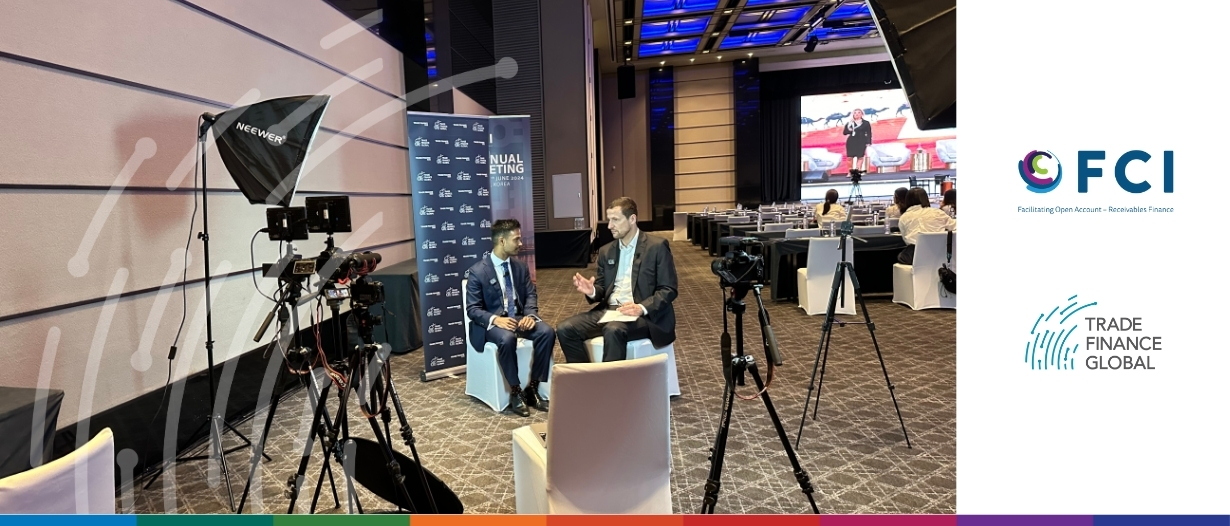Estimated reading time: 4 minutes
Trade finance is an expansive industry, touching all corners of the globe, and used in every industry.
Because it is so prevalent, it would be easy to continue with the status quo and let the market play itself out.
However, the reality is that dynamics are constantly changing, and require collaboration and guidance from all to ensure prosperity across the board.
How do we achieve this and how do we build these processes into the industry?
To talk about some of these points, Deepesh Patel spoke with Kai Fehr, Global Head of Trade and Working Capital at Standard Chartered Bank at FCI’s 56th Annual Meeting in Seoul.
The role of trade finance in global prosperity
The potential of trade finance to act as a catalyst for economic growth and stability is immense.
Standard Chartered reviewed the pools of revenue wallets for trade finance overall, and found an estimated $50 billion revenue wallet globally. These numbers suggest significant opportunities across diverse regions.
The major revenue shares lie within Europe ($25 billion), Asia ($16 billion), and the US ($8 billion), with Asia, in particular, presenting robust growth opportunities especially in open account transactions.
But these numbers are changing, and so are the dynamics of trade finance.
Fehr said, “When we look into the development in the world with changing supply chain, you need to have a proposition how you tap into these wallets because around two-thirds of them sit in the open account space.”
This represents roughly only $18 billion of revenue from the traditional trade finance instruments, such as letters of credit and guarantees, and these numbers have been consistent for many years.
This trend is particularly noticeable in Asia, where open accounts are growing at around 15% rate.
If you want to take advantage of the growth, companies need to rethink their trade finance strategies.
Trade finance instruments are not the only aspects of the industry undergoing major changes. The locations of physical supply chains are changing. Fehr said, “Almost 70% of our clients are telling us that they are changing their sourcing and supply chains.”
According to Fehr, countries like Poland, Mexico, Malaysia and Thailand are poised to benefit from this restructuring.
Developing products to support growing markets
The development of import factors was a popular topic at FCI’s conference. Despite the prominence of major players like BNP, Wells Fargo, and others in the import factor market, there exists a notable disparity in active engagement across the region.
Fehr said, “Interestingly, out of 109 import factors, only 19 are active in Asia, which significantly narrows down to about 5% of the total import factoring activities happening in the continent.”
Though this number is quite low and currently represents a challenge, it also provides an opportunity for growth.
And there are ways to utilise existing strengths and resources to grow the import factor framework.
Fehr said, “There is an opportunity to use your credit strengths, to use your understanding of the local credit market. Use available headroom, work with the insurer to build a proposition around import factors.”
The hamster wheel: The problem that keeps trade heads up at night
Sustainability is increasingly integral to trade finance, necessitating the incorporation of environmentally sound practices into core operations.
A business cannot take into account all sustainability considerations in a short time frame during a deal.
Instead, Fehr said, “ You need to lobby third-party certification, third-party data, and build it into your hamster wheel.”
Additionally, the push towards digital transformation is reshaping how trade finance operations are conducted.
This transformation is yet another example of ‘the hamster wheel’, where processes need to be built into banks. Fehr said, “The hamster wheel only works if the client assesses your bank and the transaction flows through like a clockwork.”
As banks start to build these processes into their system, the industry can continue to thrive in the face of changing dynamics.
























